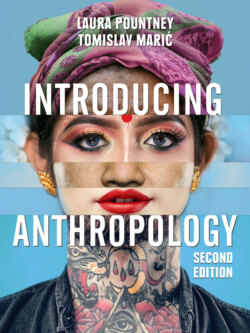Читать книгу Introducing Anthropology - Laura Pountney - Страница 86
Interviews
ОглавлениеAlthough the main method of ethnography is participant observation, the fieldworker has to conduct interviews as well. This can take the form of one-to-one in-depth interviews, group interviews or simply general talking and asking questions. It is difficult to describe how to conduct an interview since it will depend on the skills of the fieldworker, but ideally it needs to resemble everyday conversation, which is informal and free flowing. Researchers are unlikely to have a set of questions, although there are likely to be certain topics they wish to cover. An unstructured interview offers greater opportunity for respondents to take control of the situation, providing them with the scope to express their own views. This will increase the validity of the data obtained, since there is a greater chance that the views expressed by the interviewee will present a true, accurate description of what is being studied. The researcher is also able to probe with further questions or to ask the interviewee to expand or clarify a point that has been made. This, again, provides more depth to the data. Despite these advantages, unstructured interviews have their limitations. For example, the researcher might ‘probe’ a little too far, directing the discussion and thereby steering the conversation away from what the interviewee wants to talk about. This influence is called interviewer bias. A similar problem occurs when the researcher is able freely to interpret what the interviewee is saying. Misleading and inaccurate interpretations will reduce the validity of the research. Generally, people like to present themselves in a favourable light. This can result in interviewees emphasizing socially desirable aspects of their behaviour and attitudes in the presence of the researcher. Consequently, interviewees might exaggerate or lie.
interviewer bias When an interviewer’s opinions or approach to questioning direct the discussion, steering the conversation away from what the interviewee wants to talk about
If you came upon this group of people, would you be able to figure out what was going on? What cultural patterns could you identify and understand? For instance, what is the significance of the colours and styles of clothing? Why are all the girls together? What are they waiting for? Where are they? Is the arrangement of people in this photo random? What questions would you ask them to find out what they are doing? (© Maria Salak)
